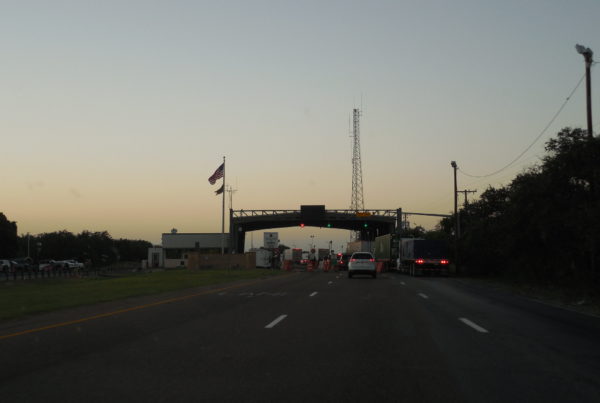Last September, the Biden administration announced a new plan for border detentions – limiting immigration arrests by putting a priority on recent border crossers and migrants deemed to pose a threat to national security and public safety. On Thursday, the U.S. Supreme Court refused to reinstate the policy, which had been blocked by lower courts after Republican state attorneys general filed suit.
The Biden policy offered flexibility to immigrants with what the Texas Tribune described as “mitigating factors” such as migrant farm workers and grandmothers caring for kids already in the U.S. It would have marked a switch from the Trump administration’s policy of making being in the U.S. without authorization the sole basis for arrest or deportation. But the Biden administration’s plan was challenged by Republican attorneys general. The AGs of Texas and Louisiana convinced a federal judge in Texas to vacate the guidelines, leaving federal border agents, and many undocumented migrants in the U.S. in limbo. The U.S. appealed to the Fifth Circuit to reinstate those guidelines, but that court said no. So last week, the high court weighed in on the subject, refusing to reinstate the Biden administration’s immigration enforcement strategy, though by all indications, this is not the final word on the matter.
Fatma Marouf is a professor of law and the director of the Immigrant Rights Clinic at Texas A&M University. Marouf says states were arguing enforcing the Biden administration’s policy would cause them financial hardship. Listen to the interview above or read the transcript below.
This transcript has been edited lightly for clarity:
Texas Standard: Let’s talk about the practical implications of the Supreme Court’s decision. And we should note this was not a case that was argued before the court. It appears the Biden administration was asking the court to intervene, correct?
Fatma Marouf: Correct. So this is still a very preliminary stage. What happened, as you said, is that the district court judge threw out the enforcement policies and the administration basically wants to keep implementing them while the litigation continues.
But apparently the court says that can’t happen. And I’m curious about what that means on the ground. If you are involved in border enforcement or if you are unaware of how enforcement is being carried out by the U.S.. Well, what what’s the answer there? Is it the Trump administration’s policies that are controlling or is there no policy?
It’s not the Trump administration’s policies. But right now there’s no guidance as to what the policies are. And that has created an enormous amount of confusion for immigrants, their lawyers and immigration officials themselves. There’s thousands of pending cases for prosecutorial discretion under these guidelines, basically people asking that their deportation cases be dismissed. And no one really knows what’s going to happen to those requests if or when they’ll be decided.
What about the reasoning behind not wanting to take up this issue right now? What was the Supreme Court saying here?
So this was really just a one paragraph decision with no reasoning at all. So they’re not explaining why they wouldn’t take it up. But they did something very unusual, which is they said, you can skip over the Fifth Circuit appeal. You don’t have to wait for the appellate court to make a decision. You can come straight to us, the Supreme Court, and they’re going to hear the case in the December term, which is the end of November. So within a few months, the court is going to hear oral arguments.
As we’ve all seen, there’s no guarantee that we’ll have a decision within a few months, right? And so this this may be in limbo up until June of, what, next year or something?
Right. So it’s certainly creating chaos on the ground. Not making a decision now suggests that maybe the Supreme Court isn’t recognizing the experience as a matter for the people involved. So the delay itself is quite problematic.
For those who wanted this change, how big of a setback is this overall. What’s the view?
Because it’s not yet a final decision. I wouldn’t say it’s a huge setback at this time if the court were to agree with Judge Tipton’s decision and throw out the priorities. That would be a huge setback and that would be a pretty significant change to how we’ve understood the president’s immigration powers. This these types of enforcement priorities across administrations have always been understood to be something a president can do. So now to limit that in some way would change how we construe the president’s power over immigration. The court could also take sort of a more conservative approach and just say the procedural way it was done was flawed – in which case the administration would just have to go through some new procedural hurdles but could still issue enforcement priorities.
I think it’s worth noting that this was the first published order, unless I’m mistaken, in which Justice Katanji Brown Jackson actually participated. Right?
That’s correct. And it’s also odd that the decision came out with a 5-4 gender split with Justice Barrett, siding with Justices Sotomayor, Kagan and Jackson.
Could you explain why it is that these Republican attorneys general were going after this policy in the first place?
The states were arguing that these enforcement parties caused them financial hardship. So, for example, that it would cause immigrants to remain in state prisons longer than they otherwise would. They also argued that the priorities conflict with the immigration laws passed by Congress and that the procedure used to issue the priorities was flawed, that it should have gone through a notice and comment process under the laws governing administrative agencies.















